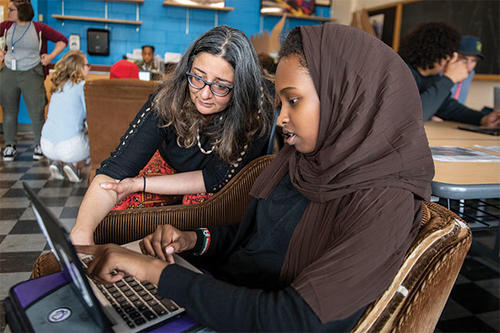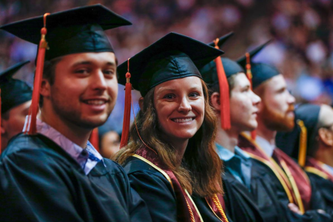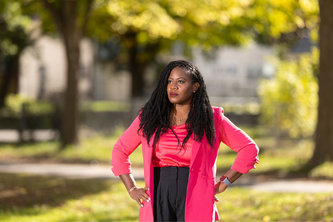
Sean Baldwin dimmed the lights and asked a student to read the words projected on the large screen. She spoke aloud: “No one can tell your story like you can.”
Baldwin, who teaches English at Northeast Middle School in Minneapolis, repeated the words to emphasize their meaning. Then he played a series of videos made by students in previous classes. A hush fell over the room of eighth graders.
One video focused on the school’s dress code, which—the narrator noted—pertained only to girls. Another video centered on depression and its personal consequences. A third wove together facts about climate change and pictures of its effect on Minnesota’s landscape.
Minutes later, noise and bustle returned to the room. Yet it was a focused energy, as students typed sentences and did image searches on their laptops.
For months the students had been learning about storytelling, thanks to the Minnesota Youth Story Squad, a program run by the Department of Gender, Women, and Sexuality Studies in the University of Minnesota’s College of Liberal Arts. As a final project, they were producing short videos about things that mattered to them.
Minnesota Youth Story Squad is the brainchild of U of M professor Jigna Desai and researcher Kari Smalkoski. Launched in 2016, the program aims at closing the academic achievement gap in public schools.
Smalkoski, a former English teacher, became interested in the achievement gap while studying adolescent boys and their emotional-social development.
“Boys are struggling in ways that I think surprise a lot of people,” says Smalkoski, who interviewed dozens of boys as part of her research. “I realized there wasn’t one boy in my study who was not dealing with some sort of profound violence at school or home or in their neighborhood. I was also astounded by the number of boys who appeared to have friends, but who felt very alone and isolated.”
She wondered if a key to boosting academic performance might be helping kids develop traits like open-mindedness, conscientiousness, empathy, and agency, which are reliable predictors of happiness and success in adulthood. Yet how could those kinds of connection be taught effectively?
Smalkoski soon found a collaborator in Desai, who had a background in cinema and telling stories about identity.
“Much of my work has been on media,” Desai says. “How do we democratize access? How do we create new narratives and additional narratives?” One way is to give people the means to tell their own stories through blogs, social media platforms, videos, zines, and other channels.
Smalkoski and Desai developed a curriculum for using digital storytelling to help students build connections to each other and their teachers.
The squad has taught digital storytelling to more than 1,100 students across the Twin Cities during the past three years. The researchers ultimately aim to track the eighth graders’ performance from middle school through high school and beyond.
Another goal is to get middle school students to think about their future. In the classroom, they interact with U of M students who aren’t much older than they are.
“The aim isn’t necessarily to get them to attend the U of M—although that would be wonderful,” says Smalkoski. “Mostly, we want them to understand that there are options.”
Read the full story and see videos by Minnesota Youth Story Squad
- Categories:
- Campus Affairs





